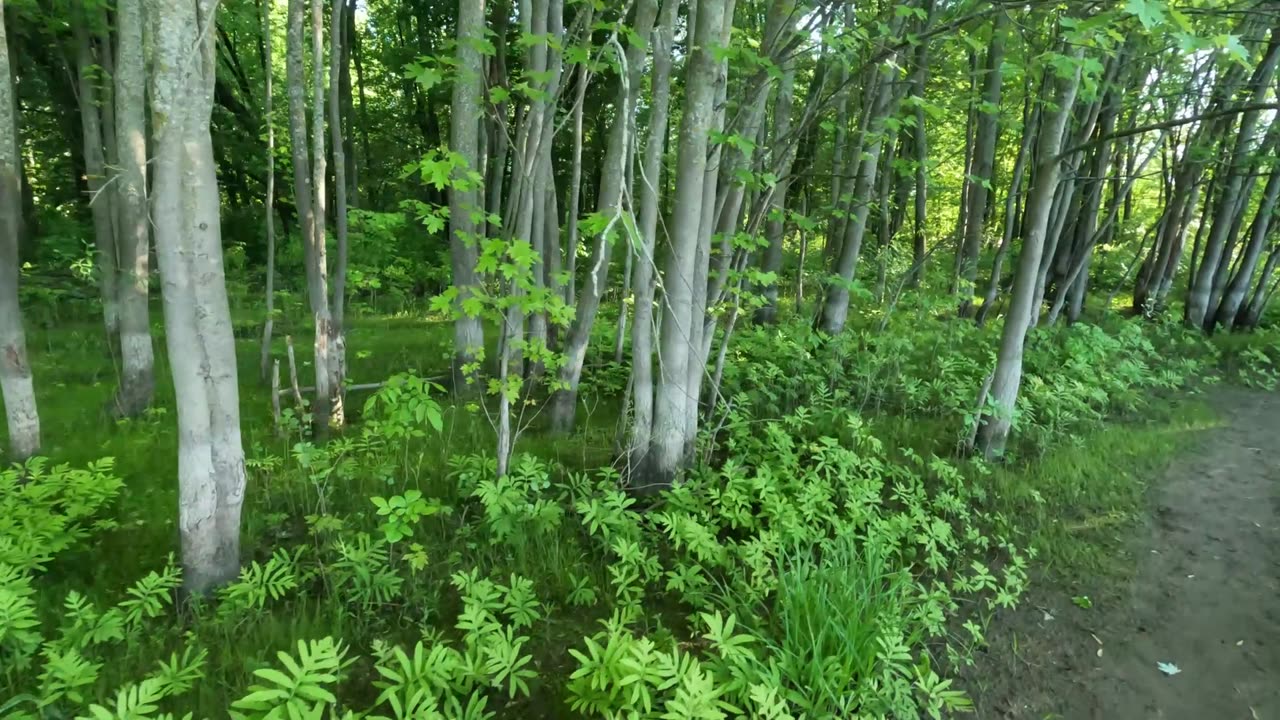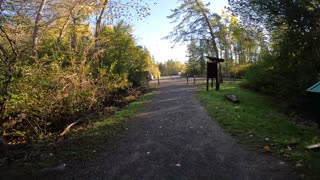Premium Only Content

🚶♂️ Hiking The Gatineau Hills In Quebec 🍁 Summer Edition ☀️ Canada 🥬
Healthy4Life - The Nature Took Over My Life. 5.5 Hours studying the Forest...
Gatineau Park is the National Capital Region’s conservation park. The largest green space in the region, the Park occupies an area of more than 361 square kilometres, and is a place of rich and unique biodiversity. It is the second-most visited park in Canada, and a destination for outdoor enthusiasts to engage in recreational activities that respect the environment.
Gatineau Park’s vast territory is divided into several sectors, one of which is accessible from downtown Ottawa–Gatineau, and each of which feature various points of interest and historical places. Unlike other national parks, this park has several entry points, and some roads through it, leading to the northern and western sectors.
Wildlife
The Park supports a broad diversity of wildlife, including thousands of invertebrates, about 10 species of reptiles and 15 species of amphibians. There are more than 50 mammal species, including the white-tailed deer, beaver, black bear and fisher. Nearly 230 bird species have been seen in the Park.
Plants
Gatineau Park has a wealth of plant species not found anywhere else in Quebec. It is home to approximately 1,000 vascular plant species and 50 species of trees.
Species at risk
About 90 plant and 60 animal species in the Park are at risk in Quebec and/or Canada. This includes:
one of Quebec’s largest wild leek populations
the least bittern
part of Quebec’s only known Blanding’s turtle population.
An important Woodsia Obtusa population (only 8 known populations in Canada)
The Park is also home to Quebec’s only known population of the rare juniper hairstreak butterfly.
Conservation priorities
The Gatineau Park Ecosystem Conservation Plan addresses six key priorities, and guides the protection of the Park’s fragile natural resources. The six priorities are:
Protecting biodiversity
Protecting species at risk
Limiting habitat fragmentation
Protecting the ecological continuity zones
Limiting pressure from human activities
Ensuring continued research to facilitate an ecosystem management approach based on ecological integrity
The latest Status Report on Gatineau Park Ecosystems concludes that the overall condition of Gatineau Park is “good.”
The land and waters of Gatineau Park
The Park is part of the Canadian Shield, a Precambrian rock mass that was formed at least one billion years ago. Tectonic shifting and glaciers formed the rolling hills, flatlands, bare rock and steep escarpments visible in the Park today. The Eardley Escarpment marks the dividing line between the Canadian Shield and the St. Lawrence Lowlands.
There are more than 50 lakes in Gatineau Park, including Pink Lake, one of only 58 known meromictic lakes in North America. As well as lakes, streams and rivers, the Park has several wetland areas.
Five of Gatineau Park’s ecosystems and two of its habitats have great ecological importance.
Valued ecosystems
La Pêche Lake
Eardley Plateau
Eardley Escarpment
Pink Lake Plateau
Three-lake chain — Philippe, Harrington (Lac Mousseau) and Meech lakes
Valued habitats
Folly Bog
Lac des Fées
These valued ecosystems and habitats are home to many of the Park’s plant and animal species at risk.
-
 9:23
9:23
Hiking Every Trail In Ottawa & Gatineau 🚶🥾🌴🍁
24 days ago🦌 2024 Spring Edition Hiking The Trans Canada Trails & Old Quarry Trail Part 2 In Ottawa🍁 Canada 🌴
1272 -
 3:36:23
3:36:23
Llama Noises
6 hours ago $0.55 earnedKicking Names and Taking Ass: Marvel Rivals
9.62K -
 1:08:32
1:08:32
The Charlie Kirk Show
3 hours agoTHOUGHTCRIME Ep. 72 — Self-Sterilizing Libs? 2032 Armageddon? Worst Super Bowl Ever?
68.3K27 -
 1:14:02
1:14:02
Donald Trump Jr.
9 hours agoThe USAID Truman Show, Interview with Mike Benz | Triggered Ep.214
131K191 -
 1:37:34
1:37:34
Precision Rifle Network
1 day agoS4E4 Guns & Grub - You Can't Handle The Truth!
11.6K -
 56:14
56:14
Flyover Conservatives
23 hours agoSick, Tired, & Foggy? The TRUTH About What’s Living in Your Gut! - Dr. Jason Dean | FOC Show
30.1K5 -
 34:24
34:24
Kimberly Guilfoyle
10 hours agoFaith, Fairness, and a Better Future: Live w/ Joy Pullmann & Elizabeth Mitchell | Ep.194
135K31 -
 1:12:20
1:12:20
Josh Pate's College Football Show
8 hours ago $2.81 earnedBig CFB Changes Coming | DeBoer Fixing Alabama | Signing Day Reaction | OhioSt vs Michigan Shift
47.8K2 -
 59:39
59:39
The StoneZONE with Roger Stone
4 hours agoEXCLUSIVE: James O'Keefe Talks to Roger Stone About Dropped Charges Against Him | The StoneZONE
37.9K2 -
 1:48:10
1:48:10
megimu32
4 hours agoON THE SUBJECT: Comedian LOSES It At Heckler!
23.7K4